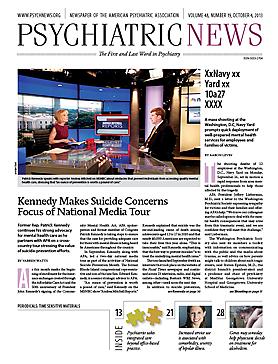People with bipolar disorder are three times more likely to have at least one medical comorbidity than are individuals with other psychiatric disorders. And neglect of counseling and medical services to alleviate impairments associated with the bipolar disorder often results in worse outcomes of both the psychiatric and general medical illnesses.
A study published online August 15 in Psychiatric Services in Advance investigated the use of medical and counseling services among outpatients with bipolar disorder in an effort to identify factors that contributed to service underutilization in this population.
According to the study, led by researchers at the departments of psychology and psychiatry at Massachusetts General Hospital (MGH), previous reports of therapeutic service utilization for individuals with bipolar disorder were inconsistent and limited to populations of military veterans.
“This study furthers the literature by examining predictors of service use in a broader [bipolar disorder] population at high risk for underutilizing services,” said lead author Louisa Sylvia, Ph.D., an assistant director of psychology in the MGH Bipolar Clinic and Research Program. She told Psychiatric News that this is the first study to assess the differences in services utilization among individuals receiving personalized care in the presence or absence of the mood stabilizer, lithium.
The study was based on the Lithium Treatment–Moderate Dose Use Study (LiTMUS) design—a broad population-inclusion model used to assess the efficacy of moderate doses of lithium in the context of optimum personalized and guideline-informed care. The six-month multisite study collected data on 236 subjects with bipolar I disorder, diagnosed in accordance with DSM-IV criteria, to compare service use by those receiving or not receiving lithium treatment.
Service use was assessed by the Cornell Service Index, a standardized measure of health-service use among adults with cognitive impairment. Every medical and psychotherapeutic visit or hospitalization—regardless of duration—counted as one service used; also counted were visits with religious leaders, counselors, and peer supporters. In addition, the study took into account age, gender, duration in the United States, marital and employment statuses, and diagnoses of psychiatric and general medical comorbidities.
The results showed no difference between services used by patients who took lithium and those who did not. However, severity of bipolar disorder as measured by the Clinical Global Impression Scale for Bipolar Disorder Severity was associated with a 13 percent increase in overall service utilization—including medical and counseling services.
In addition, outpatients with higher depressive and mania scores on the Montgomery-Asberg Depression Rating Scale and Young Mania Rating Scale had a 15 percent and 25 percent increase, respectively, in rates of service used. Interestingly, each additional psychiatric comorbid disorder resulted in a 25 percent higher rate of overall services used, a 35 percent increase in counseling services used, and an 11 percent increase in medical services used.
“Psychiatric comorbidities, particularly anxiety disorders, predicted higher rates of using all treatment services, further suggesting that individuals with more comorbid diagnoses have more insight into their need for help and thus seek more treatment services than individuals with just one diagnosis,” the authors noted.
Sylvia told Psychiatric News that the study did have limitations, including using volunteer subjects who thus do not represent the entire population of patients with bipolar disorder, as well as using the Cornell Service Index, which cannot differentiate between use of multiple services and use of the same service multiple times.
“We hope the limitations highlighted in this paper are addressed by future researchers, as it seems clear that there are differences in service utilization among individuals with bipolar disorder, and thus, there is a need to better understand these differences to maximize equitable use of services in this clinical population,” Sylvia concluded.
This research was funded by the National Institutes of Health.

